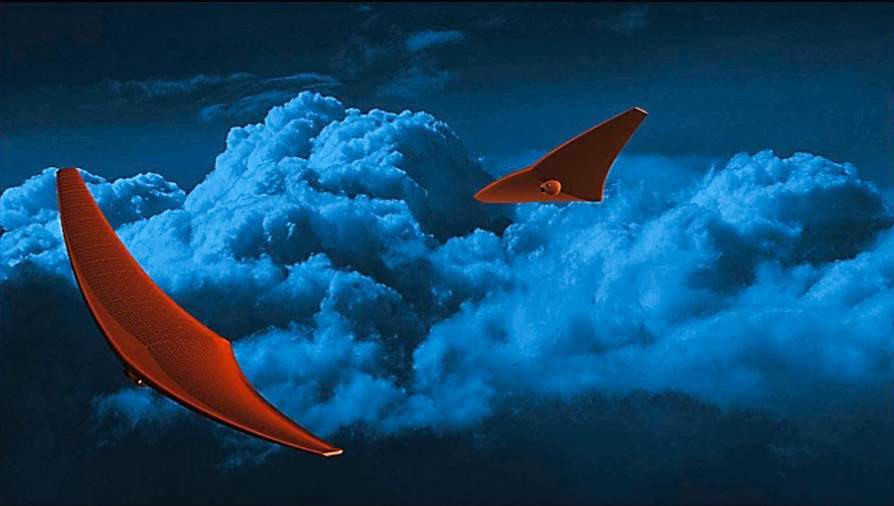
This Stingray-Shaped Spacecraft Could Be Perfect For Exploring Venus' Dark Side
Marine spacecraft?

Could a stingray-shaped spacecraft get to the dark side of Venus by flapping its wings?
Researchers at the University of Buffalo (UB) are designing a spacecraft shaped like a stingray that could explore Venus in ways never before possible. The craft, designed as part of the Bio-inspired Ray for Extreme Environments and Zonal Explorations (BREEZE) project, is one of 12 selected by NASA for the agency's Innovative Advanced Concepts (NIAC) program, which supports new, innovative technologies.
The craft, proposed by a team at the university's Crashworthiness for Aerospace Structures and Hybrids (CRASH) Laboratory, will travel in part by flapping its wings (which will look and work like a stingray's pectoral fins) in Venus' windy, upper atmosphere. These flapping fins are designed to make use of the high winds in that region while allowing the team to be able to easily control and manipulate the craft.
Related: The Strange Case of Missing Lightning at Venus
Photos: Project HAVOC: NASA Wild Idea to Explore Venus with Airships
"By taking our cues from nature, specifically sea rays, we’re looking to maximize flight efficiency. The design will allow for a so-far unattained degree of control for such a spacecraft that would be subject to severe zonal and meridional winds on the planet," Javid Bayandor, an associate professor of mechanical and aerospace engineering at UB and the project’s lead investigator, said in a statement.
Once it arrives at our neighboring planet, BREEZE is designed to travel around Venus every four to five days. It will be powered by solar panels that will charge when the craft is on the side of the planet lit by the sun, which will happen every two to three days. But the strange little stingray spacecraft won't just travel to and around Venus; it will also use specialized instruments on board to gather data, take samples of Venus' atmosphere and monitor and track weather patterns and volcanic activity.
The 'dark side' of Venus
Venus rotates more slowly than any of the other planets in our solar system — while the planet takes about 225 days to orbit the sun, it takes 243 days to rotate on its axis (so a day on Venus is actually longer than a year). Because of this, the planet has a "dark side" that faces away from the sun for extended periods of time.
Get the Space.com Newsletter
Breaking space news, the latest updates on rocket launches, skywatching events and more!
BREEZE would be well suited to study this mysterious side of the planet, since it can sufficiently charge its solar panels while traveling on the sun-facing side of the planet, allowing it to use that energy to explore, once it reaches the planet's dark side.
The flapping, ray-like wings that the craft will use to traverse Venus are also designed with the planet's quirks in mind. Venus, with scorching surface temperatures close to 900 degrees Fahrenheit (482 degrees Celsius) and thick clouds of sulfuric acid, could be a dangerous place to send even a crewless, robotic spacecraft. But because of the wing design, which includes an internal tension system, researchers operating it would be able to adjust thrust, lift and mechanical compression, allowing for better control and stability around the inhospitable planet.
Technology like this could one day be harnessed and applied to the exploration of other mysterious, cosmic destinations like Saturn's moon Titan, according to the statement.
- Can Venus Teach Us to Take Climate Change Seriously?
- Should We Land on Venus Again? Scientists Are Trying to Decide
- Life on Venus? Why It's Not an Absurd Thought
Follow Chelsea Gohd on Twitter @chelsea_gohd. Follow us on Twitter @Spacedotcom and on Facebook.

Join our Space Forums to keep talking space on the latest missions, night sky and more! And if you have a news tip, correction or comment, let us know at: community@space.com.

Chelsea “Foxanne” Gohd joined Space.com in 2018 and is now a Senior Writer, writing about everything from climate change to planetary science and human spaceflight in both articles and on-camera in videos. With a degree in Public Health and biological sciences, Chelsea has written and worked for institutions including the American Museum of Natural History, Scientific American, Discover Magazine Blog, Astronomy Magazine and Live Science. When not writing, editing or filming something space-y, Chelsea "Foxanne" Gohd is writing music and performing as Foxanne, even launching a song to space in 2021 with Inspiration4. You can follow her on Twitter @chelsea_gohd and @foxannemusic.










